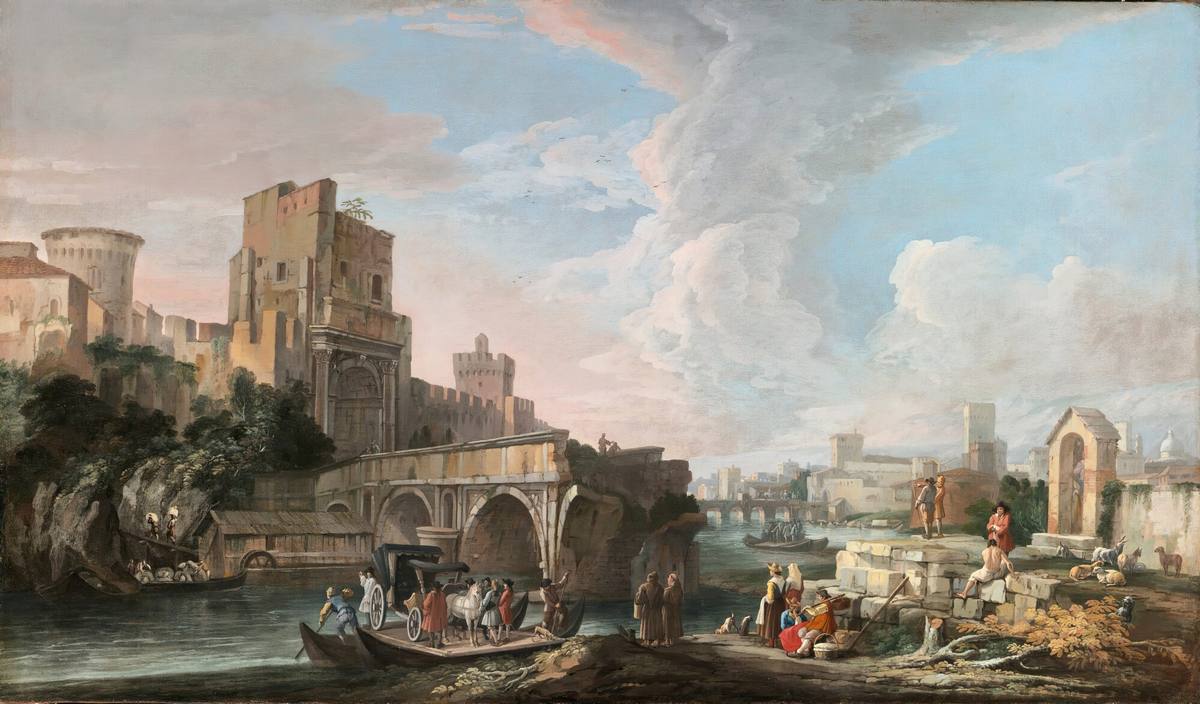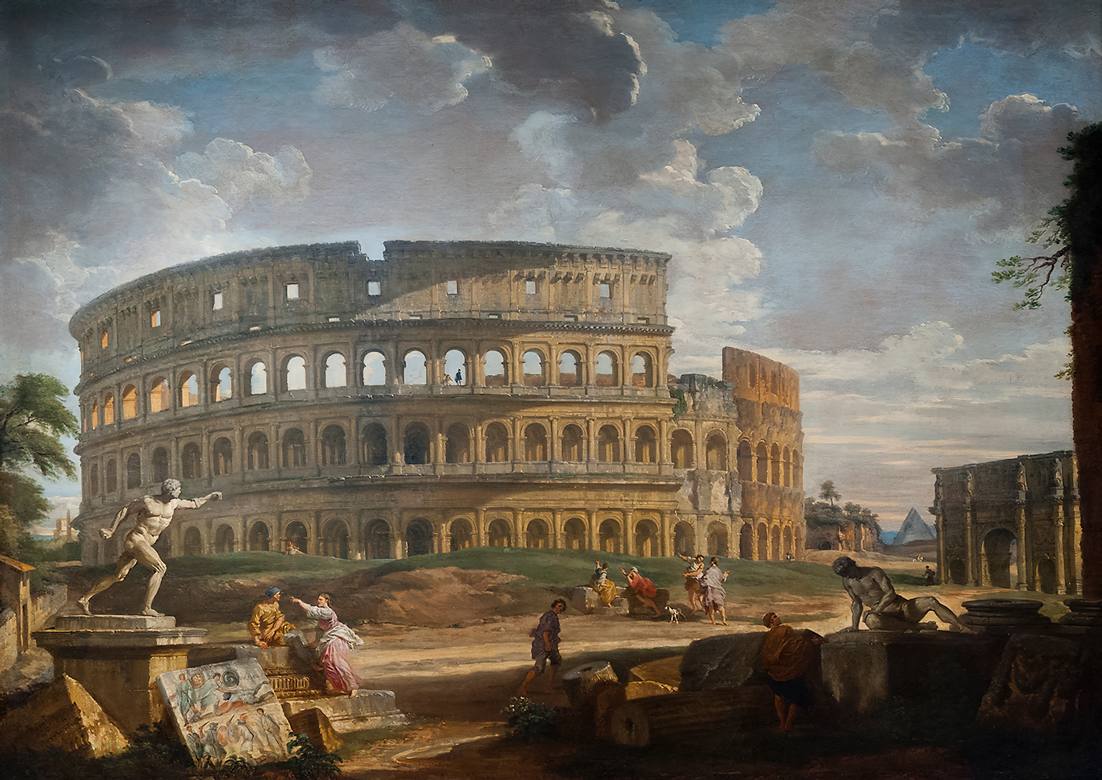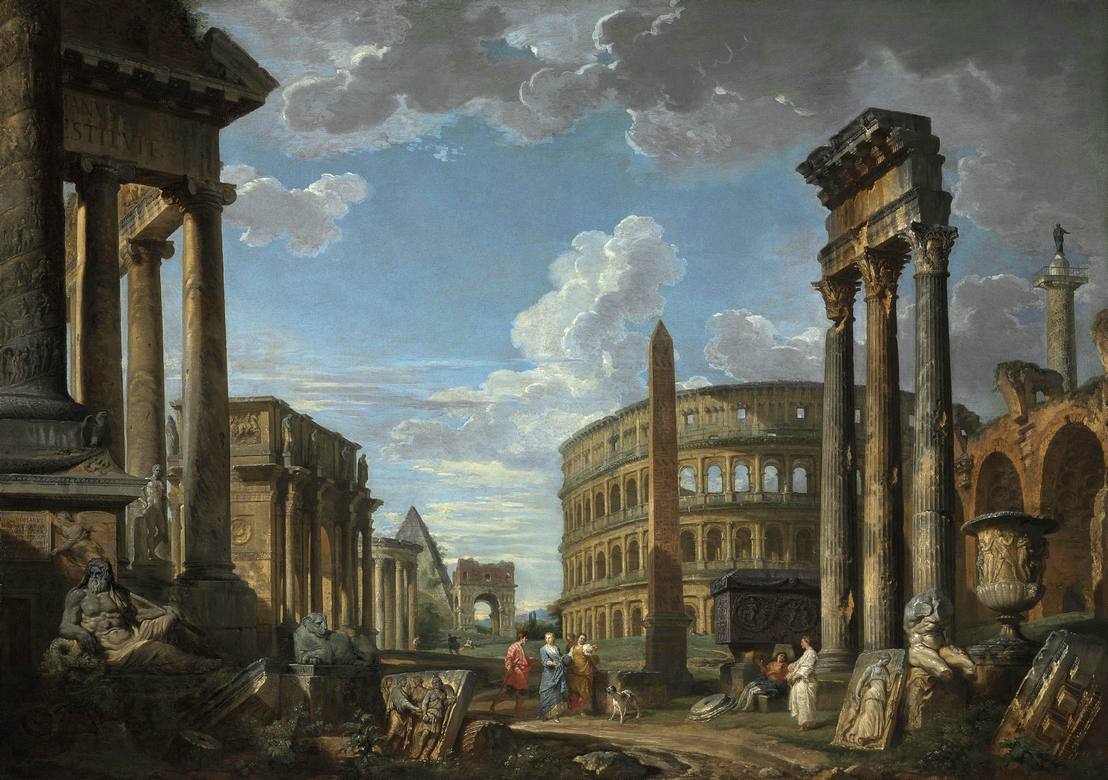
Vedutisti in Rome and Venice
View Painters in Rome and Venice
for the young Canaletto to get ideas
Tendencies and novelties are not something we invented in the XXI century.
In Norther Europe the Vedutas was already a tendency, in the XVI century, and the more relevant names about painting places had already created a market for this painting style.
Vedutas instead of religious art (because of the strong Vatican influence, and sponsoring) or classic historical situations, or rich people portraits.
In Holland there was already a View Painter artistic movement since the 16th century with artists like Paul Bril (1554-1626) or the Ghent architect, draughtsman and engraver Lieven Cruyl (1640–1720) who also resided in Rome in the late 17th century.
In the case of Cruyl’s drawings, they replicated more the topographical aspects of the urban landscape, he was more an architect, and ventured little in the color painting zone where later on Giovanni Paolo Panini, Luca Carlevarijs or Canaletto became masters.
I would put the Vedutas trend to start in Italy with Caspar Adriaensz van Wittel, also known in Rome as Gaspare Vanvitelli, or Gaspare degli Occhiali (Gaspare with glasses).
Caspar van Wittel arrived from his native Amersfoot in Holland at the age of 23 to live in Rome, and fell so much in love with the aestetics of the city and Italy too, that decided to get established in Italy, and went on documenting the beauty of the peninsula.
He visited and painted as much as he could of Rome, and also toured the country and painted in Florence, Bologna, Ferrara, Venice, Milan, Piacenza, Urbino, and Naples.
Luca Carlevarijs was born in Udine in 1633, Udine was under the Serenissima Repubblica Veneta domination at the time, and he decided to move to Venice in 1769 after his parents died.
When he later paid a visit to Rome he received a strong influence from the Dutch painter Caspar van Wittel (often called Vanvitelli), who was a long-term resident of Rome.
Carlevarijs then started to create views of Venice, and in this city he resided for the rest of his life, creating his own image and market.
Some historians refer of Canaletto's having taken painting lessons and have worked in Carlevarijs studio at the beginning of his career but - even being very likely - there is no definite proof of it.
Giovanni Paolo Panini was a contemporary of Canaletto, and his supposedly strong commitment to creating images for the Grand Tour tourists (who could bring in money for the artists), might have inspired a certain idea of how to make success to the young Canaletto.
It is possible that the two have met when Canaletto was in Rome in 1720, but there is no proof available of this event.
![Caspar van Wittel: [1700-05] - Landscape with the Villa Aldobrandini at Frascati - Oil on canvas - Private Collection](../images_db/Caspar-van-Wittel-1700-05--cvw090-Landscape-with-the-Villa-Aldobrandini-at-Frascati.jpg)

![Caspar van Wittel: [1691-1723] - View of Tivoli with the old Waterfall and left bank of the river Aniene - Oil on canvas - Private Collection](../images_db/Caspar-van-Wittel-1691-1723--cvw084-View-of-Tivoli-with-the-old-Waterfall-and-left-bank-of-the-river-Aniene-gp.jpg)
![Caspar van Wittel: [1715] - The Piazza del Popolo - Rome - Oil on canvas - Private Collection](../images_db/Caspar-van-Wittel-1715--cvw022-The-Piazza-del-Popolo--Rome.jpg)


![Luca Carlevarijs: [ca. 1710] - The Molo looking towards the Doge's Palace - Oil on canvas - Hermitage Museum, St Petersburg](../images_db/Luca-Carlevarijs-1710ca--lc035-The-Molo-looking-towards-the-Doge-s-Palace--Hermitage-Museum--St-Petersburg-gp1.jpg)


![Giovanni Paolo Panini: [1751] - A View of the Forum Looking Towards the Capitol - Oil on canvas - Private Collection](../images_db/Giovanni-Paolo-Panini-1751--gpp025-A-View-of-the-Forum-Looking-Towards-the-Capitol.jpg)